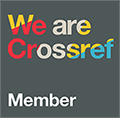Investigation of Early Childhood Educators’ Screen Media Usage Patterns and Preferences in the Classroom
DOI:
https://doi.org/10.33308/26674874.2022362425Keywords:
Child and Media, Audiovisual Media, Screen Viewing, Mediation StrategiesAbstract
The aim of this study is to gain a better understanding of how children's media is used in early childhood education environments in Turkey, more specifically, how audio-visual media items are used and how screen viewing time is mediated during school hours. This study further examines what content is most frequently shown to children in the classroom, how much and for how long, where children watch such content, and what sort of devices they use. It also probes into the criteria used by preschool teachers to choose products. The researchers drew on an online survey tool to reach out to early childhood educators with a variety of backgrounds. In total, 639 educators from both private and public schools who work with children aged 0 to 6 years took part in this study. A questionnaire with open-ended and multiple-choice questions was utilized to identify the screen media usage patterns and preferences of the teachers in the classroom. The results showed that many children in early childhood education settings are exposed to screen media during school hours. This study yielded that this is a practice performed primarily for educational purposes and usually limited to less than 30 minutes a day. Also, it concluded that educators mostly opted for cartoons for use in the classroom, considering the criteria such as age appropriateness, perceived educational value of the content, attractiveness, and formal features of the product.
Downloads
Downloads
Published
How to Cite
Issue
Section
License
Copyright (c) 2022 Journal of Education for Life

This work is licensed under a Creative Commons Attribution-NonCommercial-NoDerivatives 4.0 International License.
I accept that the Owner of Journal of Education for Life, the Editor, Associate Editors, Reviewers and the Editorial Board cannot be hold responsible regarding the scope, the findings, the discussion and conclusion of the manuscript submitted.
I declare to the editorship of Journal of Education for Life that the manuscript is original and has not been published anywhere else or is not under evaluation process for any other journal.
I approve that I grant Journal of Education for Life as the sole and exclusive right and license to publish for the full legal term of copyright of my manuscript concurring with article 5846 / 22-23-25 while I retain copyright in the work.





